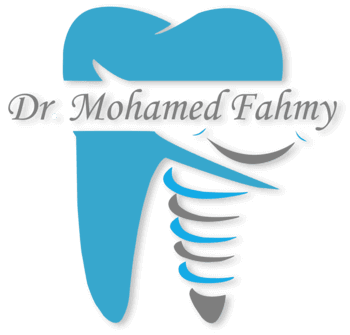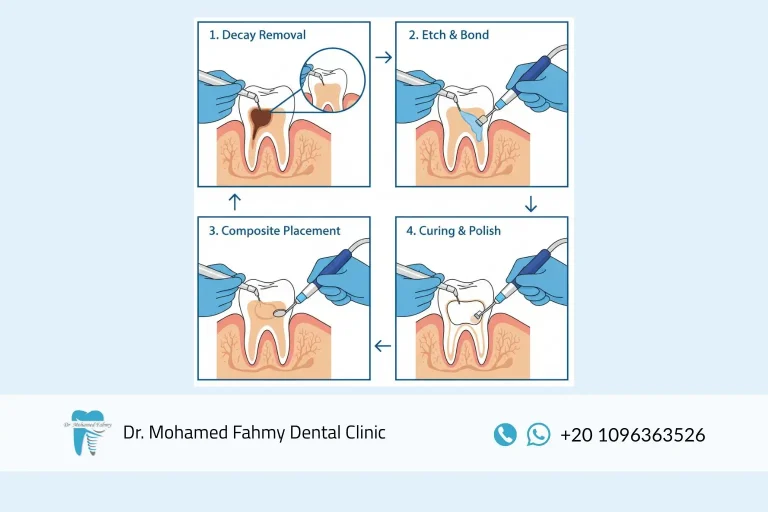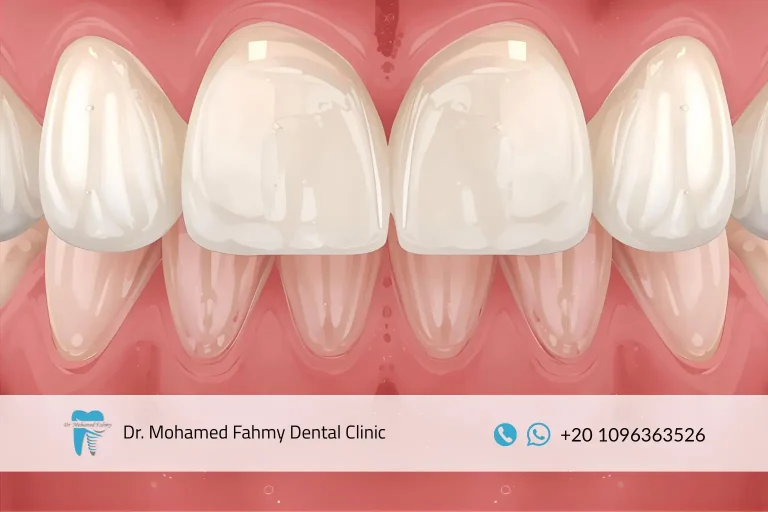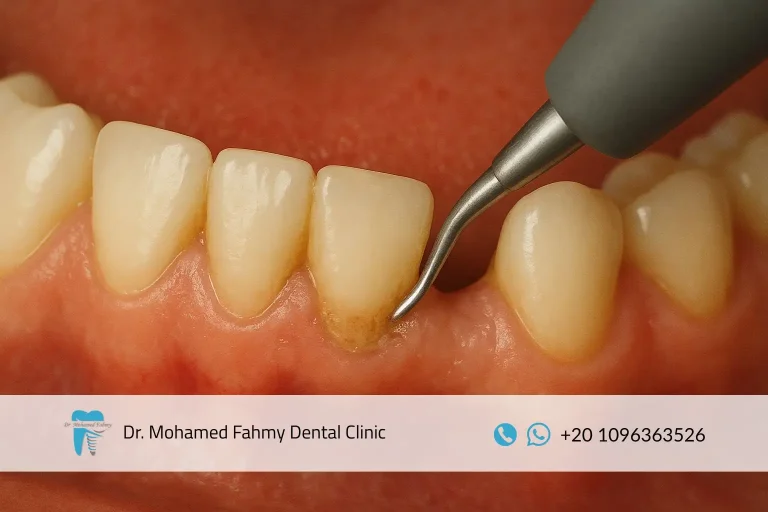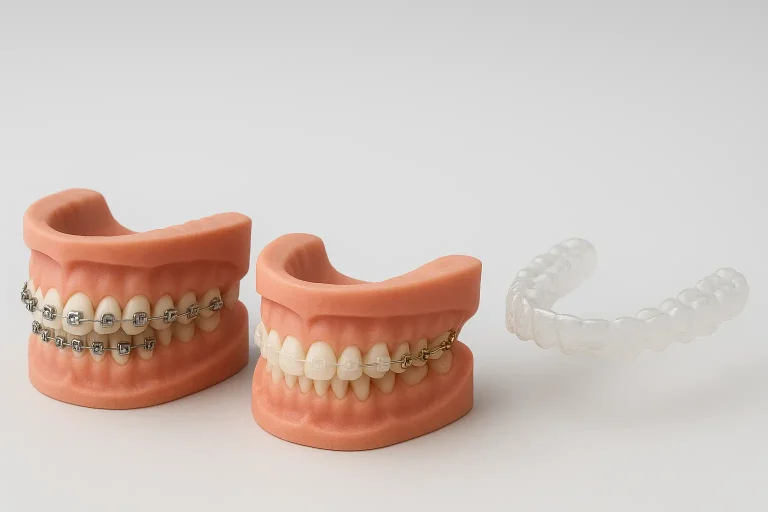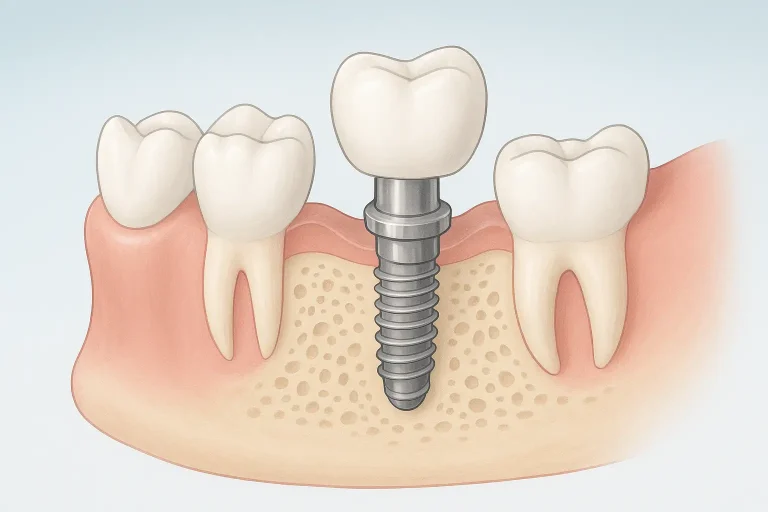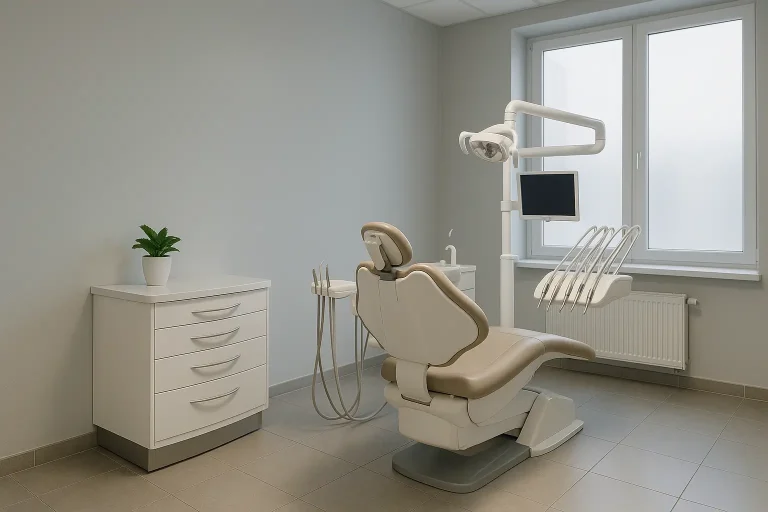Book Appointment Now
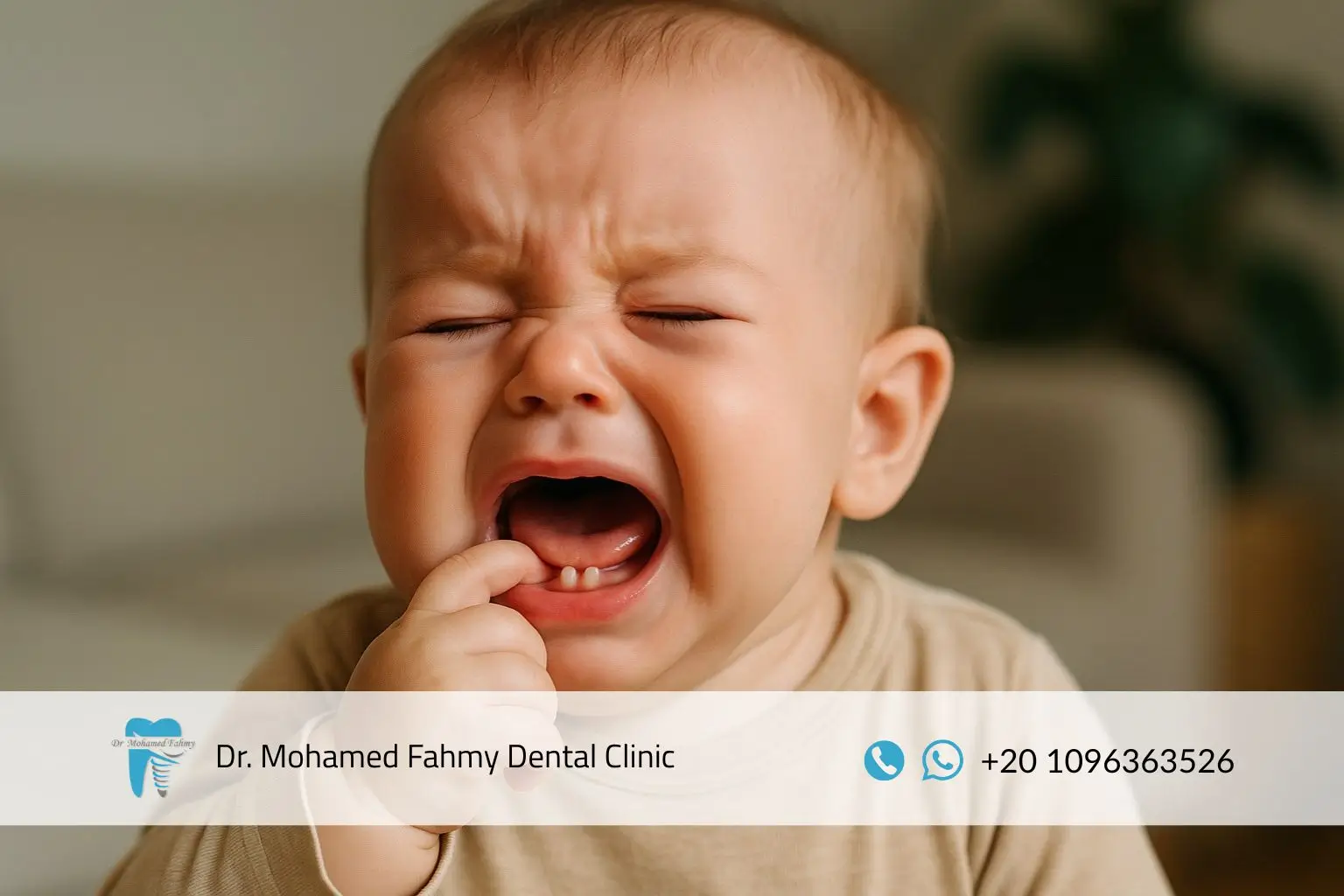
Teething Signs with Pictures | Complete Guide by Dr. Mohamed Fahmy
Teething is one of the most anticipated — yet often challenging — stages of a baby’s early development.
While it’s an exciting milestone, it can also be a stressful period for parents, especially first-time mothers.
Most babies begin showing teething signs around 4 to 6 months, though the timing varies widely.
In this comprehensive medical guide, Dr. Mohamed Fahmy Dental Clinic in Giza explains everything you need to know about teething signs with pictures, from symptoms and gum changes to pain relief, care tips, and when to visit the dentist.
Table of Contents
What Is Teething and When Does It Start?
Teething is the natural process when a baby’s first teeth (milk or primary teeth) start to emerge through the gums after forming inside the jawbone.
It usually begins between 4 and 7 months, but some babies may start as early as 3 months or as late as 9 months.
According to the American Academy of Pediatrics (AAP), delayed teething up to 12 months is usually normal if the baby’s growth and nutrition are healthy.
Factors That Affect Teething Time:
- Family genetics
- Nutrition and general health
- Vitamin D or calcium deficiency
- Premature birth or low birth weight
Babies Common Teething Signs with Pictures
Below are teething signs with pictures showing the most frequent and visible teething symptoms, and what parents can see and expect during this stage.
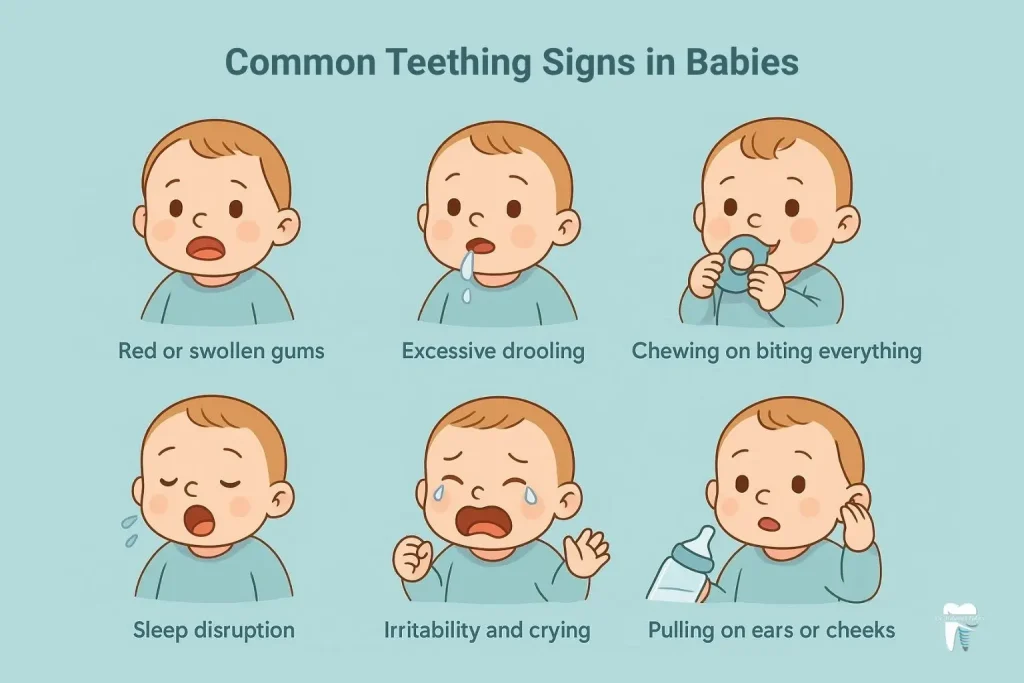
1. Red or Swollen Gums
The gums may appear reddish, puffy, or firm.
Baby gums during teething often show a small white bump under the surface — the upcoming tooth.
2. Excessive Drooling
Teething increases saliva production, which helps keep the gums cool and moist.
3. Chewing and Biting Everything
Babies often bite their fingers, toys, or anything nearby to relieve gum pressure — one of the most obvious teething signs.
4. Sleep Disruption
Your baby may wake more frequently at night because of gum discomfort.
5. Irritability and Crying
Mild fussiness or crying spells are normal due to gum inflammation and tenderness.
6. Decreased Appetite
Some babies may refuse milk or solid food temporarily because of gum soreness.
7. Pulling on Ears or Cheeks
Referred pain from the gums can make babies tug at their ears or rub their cheeks.
Baby Teeth Eruption Chart
| Tooth Type | Average Age of Appearance | Notes |
| Lower central incisors | 6–10 months | Usually the first teeth to appear |
| Upper central incisors | 8–12 months | May cause noticeable discomfort |
| Upper lateral incisors | 9–13 months | Appear next |
| Lower lateral incisors | 10–16 months | Often mild symptoms |
| First molars | 13–19 months | Can be more painful |
| Canines (cuspids) | 16–23 months | Gums may swell before eruption |
| Second molars | 23–33 months | The last baby teeth to appear |
A complete set of 20 primary teeth typically erupts by age 3.
Note: The order of tooth eruption may vary from child to child — this is perfectly normal.
What Baby Gums Look Like During Teething
When inspecting your baby’s mouth, you may notice:
- Mild gum swelling
- A white line or small bump beneath the gum surface
- Slight redness or tiny dots on the gum
- Gradual tooth eruption followed by improved comfort
Example: The white line along the lower gum indicates the first tooth about to break through.
Early Teething Signs (3–4 Months)
Some babies begin early teething as young as 3 months.
Common early indicators include:
- Constant drooling
- Tongue rubbing or chewing on gums
- Gnawing fingers or toys
- Slight sleep disturbance
- Facial rash or chin redness from saliva
Early teething isn’t a medical concern unless accompanied by fever or infection.
Teething vs. Illness: How to Tell the Difference
It’s important to distinguish normal teething symptoms from signs of illness.
| Normal Teething | Possible Illness |
| Mild gum swelling | Severe gum redness or swelling |
| Low-grade fever (≤ 38°C) | High fever (> 38°C) |
| Slight appetite loss | Refusal to eat or drink |
| Mild irritability | Constant crying or lethargy |
| Light drooling | Persistent diarrhea or rash |
If your baby has high fever, vomiting, or persistent diarrhea, see a doctor, these are not caused by teething.
Best Pain Relief for Teething Babies
At Dr. Mohamed Fahmy Dental Clinic, we recommend safe, gentle methods to ease teething discomfort:
1. Chilled Teething Rings
Cool (not frozen) teething toys can relieve gum pressure when chewed.
2. Gum Massage
Use a clean finger or a cool damp cloth to gently rub your baby’s gums.
3. Teething Gel (e.g., Gengigel)
Apply a small amount to soothe gum inflammation.
(Always consult your dentist before using any gel or medication.)
4. Medication When Needed
If the pain is significant, your pediatric dentist may recommend a mild pain reliever such as paracetamol, but only under medical supervision.
Care Tips During the Teething Stage
- Clean your baby’s gums daily with a soft, damp cloth.
- After the first tooth appears, use a baby toothbrush with water only.
- Avoid home remedies or honey (unsafe for infants).
- Do not use teething toys filled with unknown liquids or gels.
- Keep the baby’s chin dry to prevent rash.
- Provide comfort, cuddles, and reassurance — it’s a temporary phase.
When to Visit the Dentist
The first dental visit should be scheduled by your baby’s first birthday or within 6 months of the first tooth eruption.
This checkup ensures healthy tooth growth and helps prevent early cavities.
At Dr. Mohamed Fahmy Clinic in Giza, we offer professional baby dental checkups and gentle guidance for parents on oral care and safe teething management.
Frequently Asked Questions (FAQ)
When does teething start?
Usually between 4 and 7 months, though it can vary.
What do gums look like during teething?
They appear swollen, red, or show a small white bump where the tooth will emerge.
How many baby teeth will my child have?
A total of 20 primary teeth, usually complete by age 3.
Does teething cause fever?
Slight fever may occur, but high temperature is usually unrelated to teething.
Which tooth appears first?
The lower front teeth (central incisors) typically appear first around 6–10 months.
Conclusion
Teething is a normal, healthy milestone in your baby’s development.
With proper care and medical supervision, this stage can pass comfortably without pain or complications.
At Dr. Mohamed Fahmy Dental Clinic in Giza, we provide gentle teething consultations and infant dental care, using safe techniques and up-to-date equipment to ensure your child’s comfort and oral health.
For a personalized assessment and expert advice, book your appointment today with Dr. Mohamed Fahmy and get a free consultation for the first time.
Book through the website, contact us on WhatsApp, or call us

